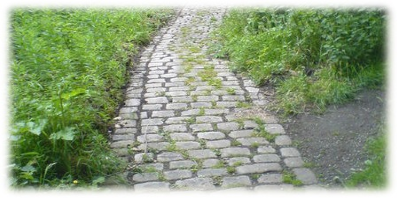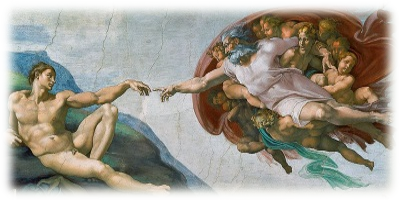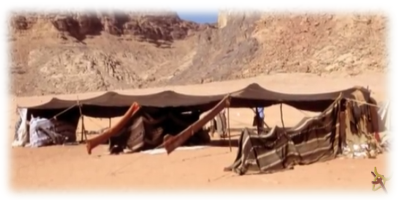A common theme throughout the Old Testament is "the way of Yahweh."
...I have chosen him, that he may command his children and his household after him to guard the way of Yahweh by doing righteousness and justice (Genesis 18:19).
The word "way" is the Hebrew word דרך (derekh, Strong's #1870) literally meaning a road or path. Israel's journey on the path of Yahweh is frequently addressed but often hidden behind the English translations.
Pointing out the road
From the root ירה (y.r.h) comes the verb ירה (y.r.h, Strong's #3384) meaning to cast or throw as seen in Exodus 15:4 - Pharaoh's chariots and his host he cast into the sea, and also in 1 Samuel 20:20 - And I will shoot three arrows to the side of it. This same verb can also be translated as "teach" in the sense of throwing the finger, or pointing, in a particular direction the one who is being taught is to walk - Teach me your way (Psalm 86:11). This last verse could be translated literally as Point me in the direction of your path.
Derived from the root ירה (y.r.h) is the noun תורה (torah, Strong's #8451), meaning "the direction that is pointed out" or a "teaching" as in Proverbs 1:8 - Hear, my son, your father's instruction, and reject not your mother's teaching. This same word is used throughout the Old Testament for the "teachings" of God our father - but his delight is in the teachings of Yahweh, and on his teaching he meditates day and night. (Psalm 1:2).
The Nomadic migration through the wilderness
The Hebrew language is composed of a series of roots. The most basic roots, parent roots, are formed by combining two letters together. In some cases, parent roots sharing a common letter are related in meaning such as in the roots צא (ts.a), צו (ts.w) and צי (ts.y), which are all related to the nomadic migration. When a third letter is added to the parent root a child root is formed and the definition of this child root is going to be closely related to the parent.
The migration
The parent root צא (ts.a) represents the migration of the nomad from one location to another. The child root יצא (y.ts.a) also has the definition of the migration. The verb יצא y.ts.a, Strong's #3318), derived from this child root can be found in Exodus 20:2 - I am Yahweh your God, who migrated you out of the land of Egypt, out of the house of bondage. This is the beginning of Israel's migration from Egypt to the land he has promised them.
The directions
The parent root צו (ts.w) represents the directions the nomad takes on his migration. This same meaning is applied to the child root צוה (ts.w.h) and its verbal form, צוה (ts.w.h, Strong's #6680), can be seen in Deuteronomy 1:19 - And we set out from Horeb... as Yahweh our God directed us. God provides Israel with their directions during their migration toward the land he has promised them.
The directions can be directions for a physical journey through a land or a journey through life. The noun מצוה (mitswah, Strong's #4687), often translated as command or commandment, but more literally means a "direction," is derived from the child root צוה (ts.w.h) by adding the letter מ (m) and is used for this journey through life as seen in Deuteronomy 6:25 - And it will be righteousness for us, if we are careful to do all this direction before the LORD our God.
The verb צוה (ts.w.h) is commonly translated as a command but this definition does not reflect the Hebraic background to the word. When we read about the "commands" of God in the Bible we have this image of a General giving his commands to his troops. But, the Hebraic concept behind these "commands" are the directions from God for our journey through life so that we will not get lost from the correct path.
The wilderness
The parent root צי (ts.y) represents the place of the nomads journey, the wilderness. From this parent root is derived the noun, ציי (tsiyiy, Strong's #6728), meaning a wilderness as in Psalm 72:9 - They that dwell in the wilderness shall bow before him; And his enemies shall lick the dust.
The wilderness is filled with landmarks which the nomad follows to guide their way. The noun ציון (tsiyuwn, Strong's #6725), derived out of the parent root צי (ts.y) by adding the letters ון (w.n) means a landmark as seen in Jeremiah 31:21 - Set up Landmarks for yourself, make yourself guideposts; consider well the highway, the road by which you went.
God has given Israel their directions to take them from landmark to landmark. As an example, God directed Israel to rest on the seventh day, the seventh day is not the direction, it is the landmark to guide them on their journey through life from one Shabbat (Sabbath) to the next. Each of the feasts were given as landmarks and the Torah provides the directions to recognize and find these landmarks. Just as there are many different kinds of landmarks in the wilderness such as, mountains, rock outcroppings, wadis and rivers, God has placed a wide variety of landmarks to guide Israel on their journey such as, a person in need or a lost animal. The Torah provided the directions to these landmarks as well as what direction to take once one has arrived at the landmark.
Zion
Zion is another name for Jerusalem but is more specifically the mountain within the city (Isaiah 2:3). The Hebrew word for Zion is ציון (tsiyown, Strong's #6726), the very same word as above meaning "landmark" with just a slight change in pronunciation. Zion is not just a mountain it is the central landmark for Israel. Three times a year all of Israel was to travel to the landmark where God has placed his name (Exodus 23:17, Deuteronomy 16:16), this landmark is Zion (Isaiah 18:7).
Staying on course
On the path and lost from the path
When traveling the wilderness, it is important to stay on course in order to find the next landmark as well as the pastures and water sources. If one was to lose their way, they will become lost and may die if they do not return to the proper route. The idea of being on course and lost from the course is found in two Hebrew words, צדיק (tsadiyq, Strong's #6662) and רשע (rasha, Strong's #7563). The word tsadiyq literally means to stay on course, to remain on the path while rasha means to be lost from the path. Tsadiyq is usually translated as righteous and rasha as wicked but, these English words do not convey the original meaning behind the Hebrew very well.
One who is tsadiyq remains on the road, following God's directions but on the other hand, one who is rasha is lost and is in jeopardy of death. Consider Proverbs 10:11 which states, The mouth of the tsadiyq is a source of life but the violence covers the mouth of the rasha.
Once one realizes that he has become lost (rasha) his goal is to turn around and return to the correct path. This idea is expressed in the Hebrew verb שוב (shuv, Strong's #7725). This same verb is used in the context of repenting (returning to the path) from wrongdoing (lost from the path) and returning to the commands (directions) of God - And thou shalt return and obey the voice of the LORD, and do all his commandments which I command thee this day or, from a more Hebraic perspective - and you will return to the path and you will listen to the voice of Yahweh and you will follow all his directions which I have pointed out to you today (Deuteronomy 30:8).
The guiding light
In ancient times the stars would guide one on their journey. The Hebrew verb הלל (h.l.l, Strong's #7725) is the shining light of these stars - For the stars of the heavens and their constellations will not give their light ((h.l.l) (Isaiah 13:10). This same word is also translated as "praise," but Hebraicly means to "look toward another as a shining light." When the Psalms say, Praise Yah (halelu-Yah) (Psalm 135:3) it is literally saying "Look to Yah as the light that will guide you on your journey."
Conclusion
Our life is supposed to be a migratory journey on God's road. The Bible is the 'map' that shows us the directions, paths and landmarks which he has pointed out to us. The Bible is also the guide to show us how to stay on the path and how to find it again if we become lost on our way. If we are not reading (a.k.a. studying) this book, how can we expect to find our way to the road of Yahweh?
Your word is a lamp to my feet and a light to my path (Psalm 119:105)

Like what you’re discovering? Continue the journey from Bible reader to translator.
|






